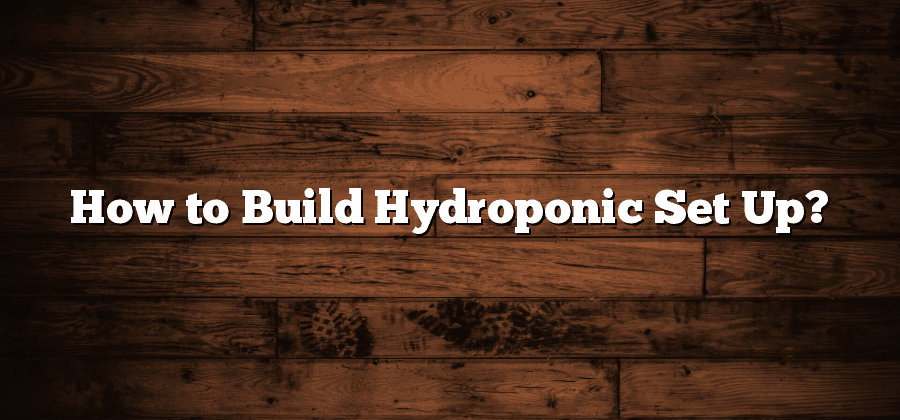Benefits of Hydroponic Systems
Hydroponic systems offer numerous benefits for both commercial growers and home gardeners. Firstly, one of the primary advantages of hydroponics is the ability to grow plants without soil. This eliminates the risk of soil-borne diseases and pests, providing a cleaner and healthier environment for your plants. Moreover, by providing plants with the exact nutrients they need in a controlled environment, hydroponics allows for faster growth rates and higher yields compared to traditional soil cultivation. This means that farmers can maximize their production and profitability while conserving valuable resources such as land and water.
Furthermore, hydroponics is a highly efficient method of cultivation. With its ability to recirculate water and nutrients, hydroponic systems use up to 90% less water compared to traditional soil-based gardening. This not only helps to conserve water resources but also reduces the risk of over or under-watering, leading to healthier plants. Additionally, the controlled environment of hydroponics allows for year-round cultivation, regardless of external weather conditions. This eliminates the need to rely on seasonal changes or climate variations, ensuring a consistent supply of fresh produce throughout the year. Overall, hydroponic systems offer a range of benefits that can revolutionize the way we grow plants, providing a sustainable and efficient solution to meet the increasing demand for food production.
Selecting the Right Hydroponic System
When it comes to selecting the right hydroponic system, there are several factors to consider. First and foremost, the size of your grow space will play a significant role in determining the type of system that is suitable for you. If you have limited space, a vertical or tower system may be the perfect solution, as it allows for multiple plants to be grown in a compact area.
Another important factor to consider is the level of expertise you have in hydroponics. If you are a beginner, a simple and straightforward system such as a nutrient film technique (NFT) or a deep water culture (DWC) system may be the best choice. These systems are relatively easy to set up and maintain, making them ideal for those who are just starting out. On the other hand, if you have more experience and are looking for a challenge, a more complex system such as an aeroponic or drip system may be a better fit.
In conclusion, selecting the right hydroponic system requires careful consideration of factors such as grow space size and personal expertise. By taking these factors into account, you can ensure that you choose a system that is tailored to your specific needs and goals.
Essential Components for Hydroponic Set Up
Hydroponic systems are gaining popularity among growers due to their numerous advantages. When setting up a hydroponic system, it is crucial to have the essential components in place to ensure optimal plant growth and development. These components include a reservoir, nutrient solution, growing medium, water pumps, air pumps, and timers.
The reservoir is the heart of the hydroponic system, where the nutrient solution is stored. It should be made of a sturdy and non-toxic material, such as food-grade plastic. A well-designed reservoir allows for easy monitoring and adjustment of the nutrient solution levels. The nutrient solution, formulated with the right balance of essential elements, provides the plants with all the necessary nutrients they need for healthy growth. It is important to regularly monitor and adjust the nutrient solution to maintain proper pH and nutrient levels. The growing medium serves as a support system for the plants and helps to retain moisture and nutrients. Commonly used growing mediums in hydroponics include coconut coir, perlite, and vermiculite. Water pumps and air pumps are essential for circulating the nutrient solution and providing oxygen to the plant roots. Timers are used to automate the lighting and pumping systems, ensuring that the plants receive the right amount of light and nutrients at the appropriate times.
Choosing the Ideal Location for your Hydroponic System
When considering the ideal location for your hydroponic system, there are several important factors to take into account. First and foremost, you will want to ensure that the area you choose receives adequate amounts of natural light. Since hydroponic systems rely heavily on light for plant growth and development, a location that offers ample sunlight or access to artificial lighting is crucial. Additionally, it is essential to select an area that has stable temperature and humidity levels, as these factors can greatly influence the success of your hydroponic setup.
Another important consideration when selecting the location for your hydroponic system is accessibility. It is vital to choose a location that is easily accessible for maintenance tasks such as checking and adjusting nutrient levels, monitoring plant growth, and conducting routine maintenance procedures. Furthermore, having a conveniently located system will make it easier to harvest your crops when they reach maturity. By keeping these factors in mind, you can ensure that you choose the ideal location for your hydroponic system, providing optimal conditions for your plants to thrive and produce high-quality yields.
Preparing the Growing Medium for Hydroponics
To achieve optimal growth and yields in hydroponic systems, it is crucial to properly prepare the growing medium. Unlike traditional soil-based gardening, hydroponics relies on a nutrient-rich solution to nourish plants directly. Therefore, the growing medium serves as a support structure for the plants and helps evenly distribute the nutrient solution. One commonly used growing medium in hydroponics is expanded clay pebbles, which provide excellent drainage, aeration, and root support.
Before using expanded clay pebbles or any other growing medium, it is essential to clean and sterilize them to eliminate any potential contaminants. This can be done by soaking the pebbles in a solution of hydrogen peroxide or a mild bleach solution. Rinse them thoroughly afterward to remove any residual chemicals. It is also advisable to soak the pebbles in fresh water for several hours to rehydrate them before use. Properly prepared growing medium ensures a healthy and disease-free environment for your hydroponic plants, setting the stage for successful growth and bountiful harvests.






